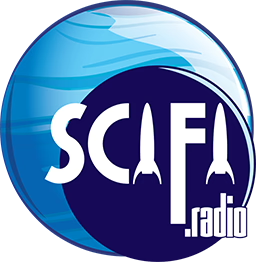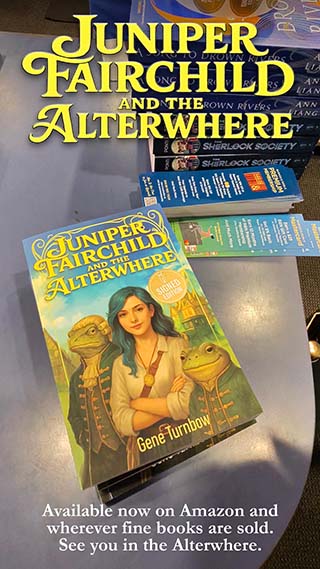
Michael Holt was created by John Ostrander and Tom Mandrake and first appeared in Spectre (vol. 3) #54 (June 1997) — better known as Mr. Terrific — stands as one of the DC Universe’s most accomplished and multifaceted heroes.
Renowned for his unmatched intellect, athletic prowess, and unyielding moral compass, Holt compares favorably with other elite minds like Lex Luthor, Bruce Wayne, and Will Magnus. Yet, his story is not defined solely by his brilliance or heroics but by his resilience in the face of tragedy and his commitment to justice rooted in equity and fairness.
The Genius of Michael Holt
Michael Holt’s intellect places him among the brightest minds in the DC Universe, rivaling the likes of Ray Palmer and Ted Kord. By the age of six, Holt had mastered the complex works of scientific luminaries like Niels Bohr, Albert Einstein, and Richard Feynman. His educational achievements include 14 doctorates across disciplines such as engineering, physics, and computer science, making him a true polymath.
Holt’s genius extends beyond theoretical knowledge; he is a master innovator. Among his most significant creations are his signature T-spheres, advanced AI-driven devices capable of defying gravity, projecting energy shields, and hacking complex systems. These tools epitomize Holt’s philosophy: technology should serve justice and create equity in an inherently unequal world.
Beyond his inventions, Holt’s mental resilience is extraordinary. After having his memory erased during a storyline, he rebuilt his knowledge base from scratch, demonstrating a near-superhuman capacity for adaptation and learning.
The Heart Behind the Mask
For all his intellectual and physical gifts, Michael Holt’s true heroism lies in his humanity. A child prodigy and Olympic decathlete, Holt achieved great success in academia and athletics, ultimately becoming a self-made billionaire through his scientific endeavors. Yet, despite his accolades, he considered his marriage to his wife, Paula, his greatest accomplishment.
Paula’s tragic death in a car accident, along with their unborn child, shattered Holt’s world. Overcome with despair, he questioned the meaning of his existence and whether his achievements held any true value. It was during this existential crisis that the Spectre appeared, sharing the story of Terry Sloane, the original Mr. Terrific. Inspired by Sloane’s legacy and motto—“Fair Play”—Holt resolved to dedicate his life to making the world as just and equitable as his remarkable abilities could allow.
This transformation is the heart of Michael Holt’s story: a man who turned personal tragedy into a driving force for justice. Where others might have succumbed to bitterness, Holt channeled his grief into action, striving to create a fairer world.
A Hero Among Heroes
Holt’s entry into the superhero community was marked by his ability to blend intellect with action. As Mr. Terrific, he became an invaluable member of the Justice Society of America (JSA), often taking on leadership roles. His strategic mind and technical expertise made him a linchpin in the team’s efforts to combat threats ranging from metahuman adversaries to cosmic dangers.
Holt’s contributions extend beyond battlefield heroics. He has acted as an information broker and technological innovator for the superhero community, providing resources and solutions to allies like Batman, Superman, and Wonder Woman. His ability to tackle problems on any scale—from creating interdimensional mapping systems to offering advanced medical care—showcases his versatility.
Notably, Holt’s moral philosophy sets him apart. Unlike heroes driven by vengeance or power, Holt’s mission is rooted in the belief that the world can and should be fairer. This guiding principle fuels his work with organizations like Checkmate, his leadership of the JSA, and his creation of the Terrifics, a team of problem-solvers addressing unconventional challenges.



Tools of a Terrific Hero
Holt’s technological arsenal reflects his genius and practicality. His T-spheres are the most iconic example, serving as weapons, shields, surveillance tools, and platforms for flight. These devices are extensions of Holt’s intellect, granting him an edge in combat and reconnaissance.
His costume is equally advanced, crafted from durable materials that provide protection without sacrificing mobility. The T-shaped mask, composed of nanotechnology, renders him invisible to surveillance systems, emphasizing his commitment to stealth and precision.
These tools are not just instruments of heroism but symbols of Holt’s philosophy: technology as a means to empower and protect rather than dominate or oppress.
A Legacy of Representation
As one of DC’s most prominent Black superheroes, Michael Holt’s identity is integral to his character. His choice to wear the T-mask—despite its controversial associations—stems from his desire to proudly assert his identity. Early designs obscured his face entirely or relied on sunglasses, but Holt’s characterization evolved to embrace visibility and representation.
This journey underscores the challenges faced by characters of color in comic book history. Holt’s story has become a beacon of representation, showing that Black heroes can excel not only through physical strength but also through intellect, compassion, and moral integrity.
Thematic Resonance
At its core, Michael Holt’s story is one of resilience and purpose. His journey reflects the universal struggle to find meaning in the face of loss, the pursuit of justice in an unjust world, and the belief that fairness is worth fighting for.
Holt’s humanity is his greatest strength. Unlike many of his peers, he possesses no superhuman abilities. His power lies in his intellect, his discipline, and his unshakable resolve. This makes him a profoundly relatable figure: a man who, despite his extraordinary gifts, faces the same moral and existential questions as any other person.
Behind the Scenes and Beyond
Michael Holt’s influence extends beyond comics. His portrayal in upcoming media, such as James Gunn’s Superman (2025) (with Edi Gathegi in the role), signals a growing recognition of his significance. As the DC Universe continues to evolve, Holt’s story serves as a reminder that heroism is not defined by powers but by the choices we make and the values we uphold.
Through his intellect, compassion, and unwavering commitment to fairness, Mr. Terrific remains one of DC’s most inspiring and well-rounded heroes—a testament to the extraordinary potential of ordinary humans to shape a better world.
Cultural Controversies: The T-Mask and Representation
One of the most persistent controversies surrounding Michael Holt is his distinctive T-shaped mask. While it serves a functional purpose—disguising his identity and rendering him invisible to surveillance systems—it has also sparked debates about its visual and cultural implications.
For some readers, the T-mask evokes uncomfortable associations with blackface, a painful and historically oppressive practice rooted in racial caricature. This connection, while likely unintentional, reflects the broader challenges of creating meaningful representation for Black characters in media. Early designs, which entirely obscured Holt’s face or relied on sunglasses, attempted to navigate these waters but were criticized for erasing or downplaying his identity as a Black man.
The T-mask was eventually framed as Holt’s way of embracing his identity—an assertion that he would not hide who he was. In-universe, Holt specifically wanted people to know he was a Black hero, rejecting anonymity as a form of erasure. However, the visual design remains divisive among fans, with some praising its symbolic boldness and others questioning its racial undertones.
This controversy reflects a broader conversation about the intersection of race, identity, and visual storytelling in comics. Holt’s character, while groundbreaking in many respects, highlights the complexities and challenges of representation in a medium shaped by historically white-dominated perspectives.
To DC Comics’ credit, Holt’s characterization has always emphasized his intellect, moral integrity, and achievements, ensuring he is never reduced to a racial stereotype. Nevertheless, the debate over the T-mask serves as a reminder of the ongoing need for creators to approach representation with cultural sensitivity and awareness.
![]()
Thaddeus Howze is an award-winning essayist, editor, and futurist exploring the crossroads of activism, sustainability, and human resilience. He's a columnist and assistant editor for SCIFI.radio and as the Answer-Man, he keeps his eye on the future of speculative fiction, pop-culture and modern technology. Thaddeus Howze is the author of two speculative works — ‘Hayward's Reach’ and ‘Broken Glass.’













You must be logged in to post a comment.